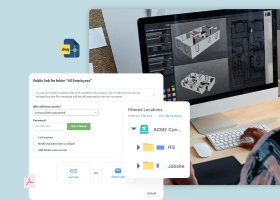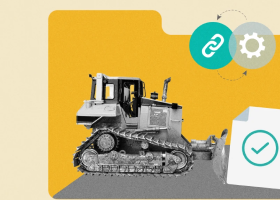The Growing Use of Point Cloud
Let’s jump in and learn:
What Is a Point Cloud Used For?
Point clouds accurately generate digital representations of existing objects, spaces, or surfaces. This can be used to recreate the imaged area or thing as well as a component inserted into other models. The applications for point clouds are limitless, as demonstrated by the following use cases.

3D mesh for construction modeling
Point clouds can be used to create a 3D mesh from multiple scans of anything from landscapes to buildings. The more complex the objects, the more scans are likely to be required. By combining them into a point cloud, multiple scans can be aggregated, making it easier to export them to modeling systems, such as CAD or BIM.
Autonomous vehicles
Point clouds play a key role in the testing programs for self-driving cars and are expected to continue to be essential when they are approved for expanded use. The onboard sensors collect point cloud information that is used to train machine learning and deep learning models, which improves the efficacy and accuracy of advanced driver-assistance system (ADAS) technology to support automation.
Building information modeling (BIM) for construction projects
A point cloud can be used to create building information models (BIMs), including representations of the physical and functional characteristics of a facility. It provides all of the raw data needed to create BIMs that accurately and comprehensively represent the structure “as-is,” which makes it a useful tool for assessing current status compared to “as-designed” to identify conflicts, errors, or omissions. A point cloud can cover everything from floor plans for a structure to surfaces, objects, and even mechanical, electrical, and plumbing (MEP).
Construction progress tracking
Capturing point clouds throughout a project provides point-in-time views that can be compared to track progress—seeing what is complete and the status of areas in progress or not started.
Construction safety inspections and audits
During a construction project, point clouds provide documentation of key phases. This can be as part of safety inspections to confirm that approved plans are being followed precisely. Point clouds can also be added to the project’s golden thread and used in the future if any construction-related issues arise.
Digital twins
A point cloud can be used to create a digital twin (i.e., an operational 3D model of an asset). Using a point cloud digital twin, processes can be set up to ensure that any changes in the physical object are automatically synchronized with the digital twin.
Disaster planning models
Point cloud data facilitates predicting the impact of and, in some cases, preventing natural disasters (e.g., floods or landslides). With data gathered using LiDAR or photogrammetry, point clouds can be used to model floods across different terrains, predict landslides, and simulate earthquakes. By understanding what-if scenarios, authorities can take preemptive steps to avert a disaster and fine-tune plans to enable fast, effective responses for those that cannot be avoided.
Earthworks projects
For earthworks projects, such as those for mining, surveying, and agriculture, drones are commonly used to collect data for point clouds. Examples of how earthworks projects use point cloud data collected by drones include:
- Monitor progress remotely
- Eliminate the need to have people capture data in hazardous or hard-to-reach areas
- Collect data for cut-and-fill comparisons
Education and entertainment
For educational material or entertainment (e.g., movies or television), point clouds can be used to create highly accurate 3D representations of real-world locations that are far more engaging than two-dimensional images. These are often used for virtual tours (e.g., a historic site) and scenery in movies (e.g., an iconic structure).
Forestry management
Forest management teams use point cloud data to create models that show trees and all of the smaller plants. These models are used to create plans for where and when to cut trees for timber, prioritize maintenance to minimize and mitigate forest fire risk and identify areas that require replanting or treatment (e.g., for disease, pests, or elimination of invasive species).
Precision mapping
Point clouds capture 3D data that is used to create highly detailed maps of places and structures, such as landscapes and buildings).
Preservation and restoration
Point clouds can gather and store billions of data points about special places that warrant preservation and records to support future restoration (e.g., buildings, monuments, and sculptures).
Surveying
Surveyors use cloud point data to measure distances, angles, and even volumes with unprecedented accuracy.
Urban planning
Urban planners use point clouds to create models of cities that include commercial buildings, roads, parks, and residences. The details (e.g., how tall a structure is or how wide a road is) are used to direct plans for how cities are expanded and updated.
What Is the Difference Between Lidar and Point Cloud?
LiDAR (Light Detection and Ranging) is a technology that captures the data to create accurate 3D spatial information that is represented as a set of coordinates in space. A point cloud is the digital representation of the spatial data collected through LiDAR and other reality capture technologies.
LiDAR is one of the most commonly used methods for creating point clouds, because LiDAR is considered the most accurate. LiDAR point clouds are often used for use cases where precision, detail, and accuracy are critical, such as construction, forestry management, mapping topography, and urban planning.
What Is the Point Cloud Theory?
A point cloud is a large collection of coordinates (i.e., points represented as X-, Y-, and Z-coordinates) gathered by 3D laser scanners (e.g., LiDAR), photogrammetry, or other technologies that are used to create 3D representations of existing objects or areas, such as structures or landscapes. Point clouds are created by combining a series of scans of an object from different angles to ensure that all are captured, then merging the scans into a single point cloud.
| Most Commonly Used Point Cloud Data Collection Methods LiDAR A method that determines ranges by targeting an object or a surface with a laser. It is a type of 3D laser scanning technology. There are several ways that LiDAR can be collected, including: -Airborne LiDAR— installed on an aircraft or drone to collect data from above-groundBathymetric—LiDAR is used to measure the depth of water bodies -Doppler LiDAR —used to measure the velocity of a target -Terrestrial LiDAR—installed on moving vehicles or tripods (i.e., mobile LiDAR or static LiDAR) to scan objects in several directions from ground level -Topographical LiDAR— used to monitor and map the topography of a region -Wind LiDAR—used to measure wind speed and direction Photogrammetry Photogrammetry takes overlapping photographs of an object, structure, or space using digital cameras at ground level (i.e., using handheld, mounted on tripods, or specialized mounts) and converts them into 3D digital models. Types of photogrammetry include: -Terrestrial photogrammetry—captures images using a tripod and camera at ground level -Aerial Photogrammetry—uses aircraft or drones to capture images from the air -Phototheodolite—uses a combination of theodolite (i.e., a precision instrument used for measuring horizontal and vertical angles) and a terrestrial camera |
Using a point cloud, data sets of spatial data can be aggregated, mined, and visualized to create customized deliverables. Once data is imported into a point cloud, it can be manipulated, modified, and parsed for analysis and design work (e.g., design, engineering, and construction projects). Once a point cloud is connected to a drawing, any number of changes can be made, such as applying colors or stylization to different areas.
Examples of how point clouds are used include creating topographic maps, digital elevation models, CAD models for structures (e.g., buildings and bridges), or underground mapping for mining sites. Most point clouds consist of millions or billions of data points. For instance, a project with 500 images generates a point cloud of 40 million points at low density and 640 million at high density. The more dense the points, the more detailed the representation will be, which provides the option of showing small features and textures for a highly precise rendering.
(SOURCE)
What What Is the Difference Between GIS and Point Cloud?
At the most basic level, a point cloud is a collection of points in three-dimensional space, and geographic information system (GIS) data is a set of geographic information. Those who do geospatial analysis with GIS data use point clouds to develop 3D models of all kinds, including buildings, cities, landscapes with elevations, and even forests. Point clouds are commonly used to track changes over time, providing insights into everything from urban development and changes to a building to deforestation and melting glaciers.
What Is an Example of Point Cloud Data?
A point cloud can be created from anything. Examples of point cloud data that is commonly gathered and used include:
- Art
- Buildings
- Bridges
- Cities
- Forests
- Interiors of structures (e.g., , electrical, floor plans, HVAC, mechanical, and plumbing)
- Monuments
- Subways
- Terrain
Point cloud data is collected in many formats, including the following.
PCD (*.pcd)
PCD (point cloud data) is used to complement data in other file formats (see examples listed below) that support extensions needed for processing in a point cloud library (PCL).
E57 (*.e57)
E57 files are vendor-neutral, compact, and able to store 3D image properties, such as color and intensity. This point cloud file format stores data in a combination of binary and XML formats that are used by 3D imaging systems, such as Laser Scanners, Radars (LADAR), Optical Range Cameras (Flash LADAR), and LiDAR.
LAS (*.las)
The LAS (LiDAR Aerial Survey) is an open format that combines global positioning system (GPS) data, laser pulse range information and inertial measurement units (IMU) to create data that fits on the X, Y and Z axes. This file format is used to store 3D point cloud data collected by LiDAR surveying systems.
LAZ (*.laz)
The LAZ (LASzip) file format is a compressed version of the LAS (LiDAR Aerial Survey). This file format is used to store LiDAR data.
OBJ (*.obj)
OBJ files are usually ASCII files used to store information about the geometry of 3D objects as well as their color and texture.
PTS (*.pts)
An ASCII text file, like XYZ, the PTS is an open file format for 3D point cloud data. It is primarily used to store data generated primarily from LIDAR scanners.
PLY (*.ply)
PLY (polygon file format) files represent and store point cloud data from 3D scanners as a collection of polygons (e.g., triangles). It can capture a variety of properties, such as color, texture, and transparency. Known as the Polygon File Format, this type stores data from 3D scanners. It accommodates properties
PTX (*.ptx)
PTX is an ASCII file format used for storing point cloud data for only organized clouds. The data is usually captured from LiDAR scanners.
STL (*.stl)
The STL (standard triangle language) is a file format native to the stereolithography CAD software created by 3D systems.
X3D (*.x3d)
X3D (Extensible 3D) is a file format the ISO standard for representing 3D computer graphics data. It is XML-based.
XYZ (*.xyz)
XYZ is the simplest file format for a point cloud. It is essentially an extremely large ASCII text file that stores data points from the X, Y, and Z axes. It is an open file format and compatible with virtually any program, which makes it future-proof. However, it has limitations, including being difficult to transfer and not storing colors, intensity, or vectors.
Point Cloud Benefits Demonstrated
The construction industry’s use of point cloud technology showcases its power and myriad benefits. Data gathered by reality capture devices, such as LiDAR and GIS, can be aggregated into point clouds to create extremely accurate and detailed representations of terrain and structures that can be used at each of the construction phases (e.g., pre-construction, design and planning, construction, and post-construction).
Point clouds are used for everything from creating 3D BIM models that are used throughout projects to records for the golden thread. In addition, point cloud data can be shared with many types of users involved in a construction project to ensure that everyone is working from the same information. Organizations that use point cloud technology with reality capture solutions have taken their work to new heights.
Combining reality capture equipment and point cloud technology provides results that demonstrate a sum that is greater than its parts. Organizations that use these solutions see reduced errors, improved timelines, cost savings, and better outcomes.
Get the Most Out of Cloud Data Management
Cloud data management solutions address many of the vexing challenges that organizations face. Since cloud data management uses a single data set, information can be more easily shared across applications. In addition, it improves data quality by ensuring that there is a single source of truth.
Consider following these three best practices to make the most of cloud data management.
1. Begin with a strategic plan
2. Maintain data quality
3. Implement data governance systems
Egnyte has experts ready to answer your questions. For more than a decade, Egnyte has helped more than 17,000+ customers with millions of users worldwide.
Last Updated: 14th March, 2024


